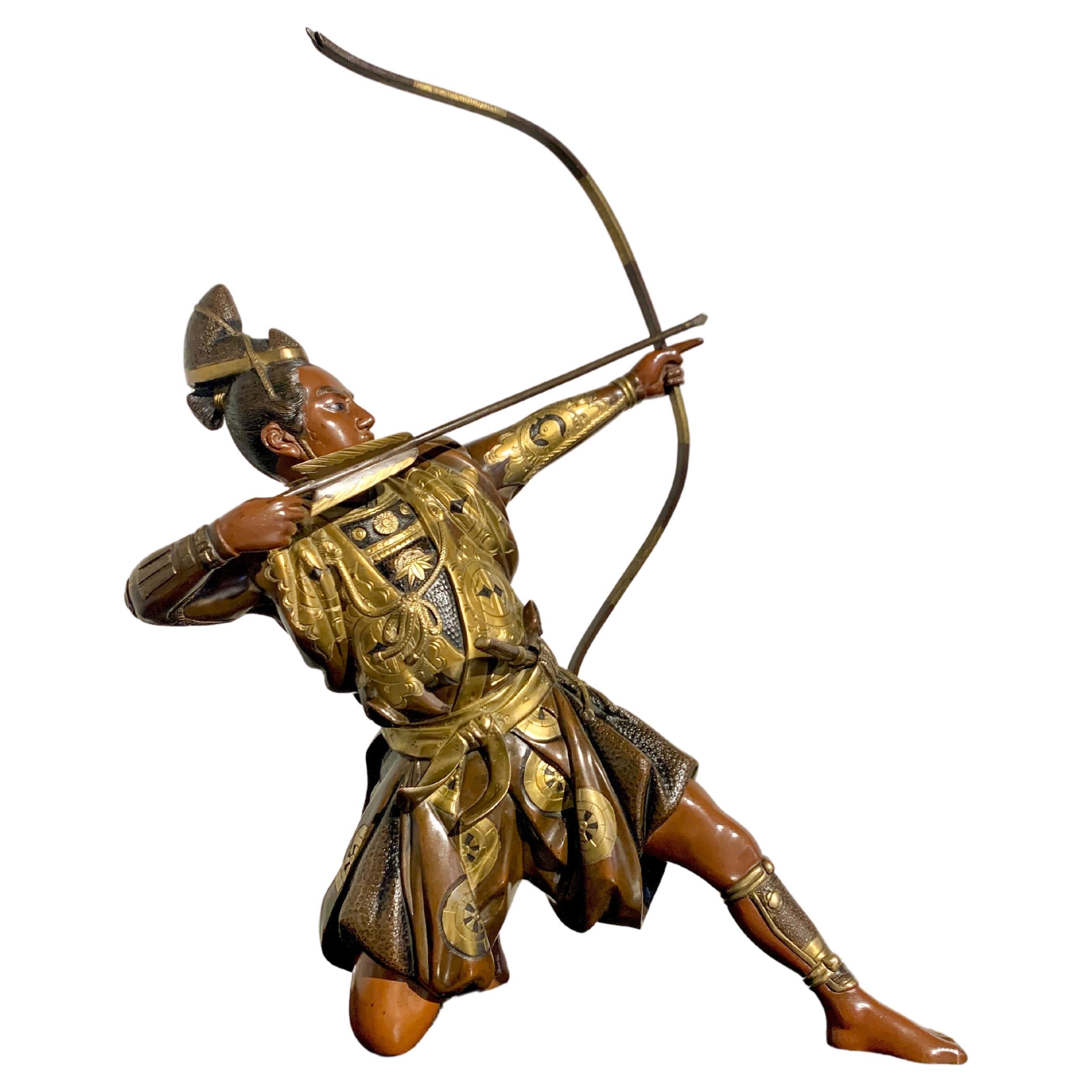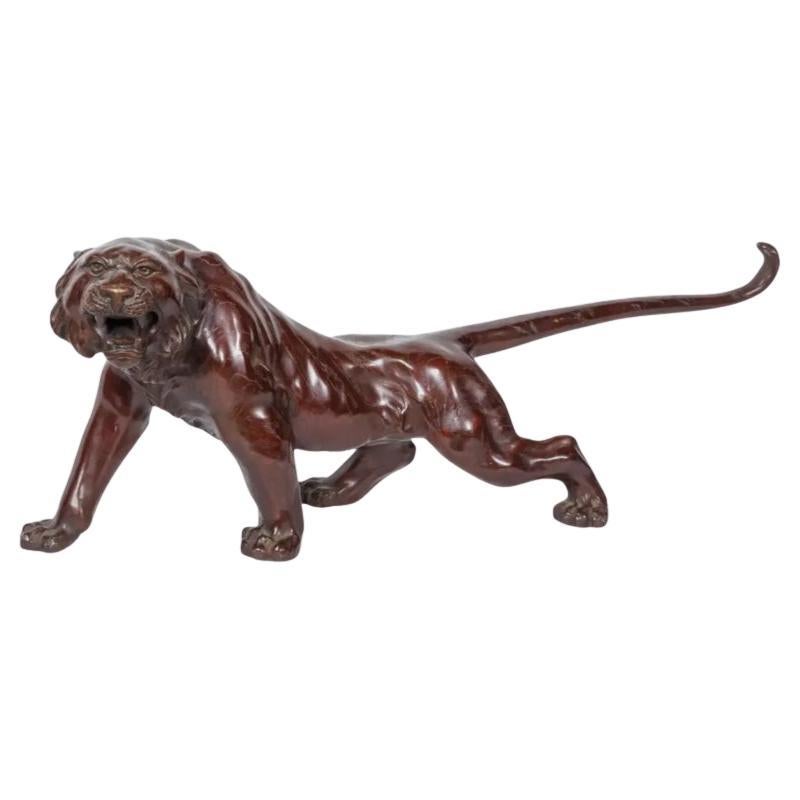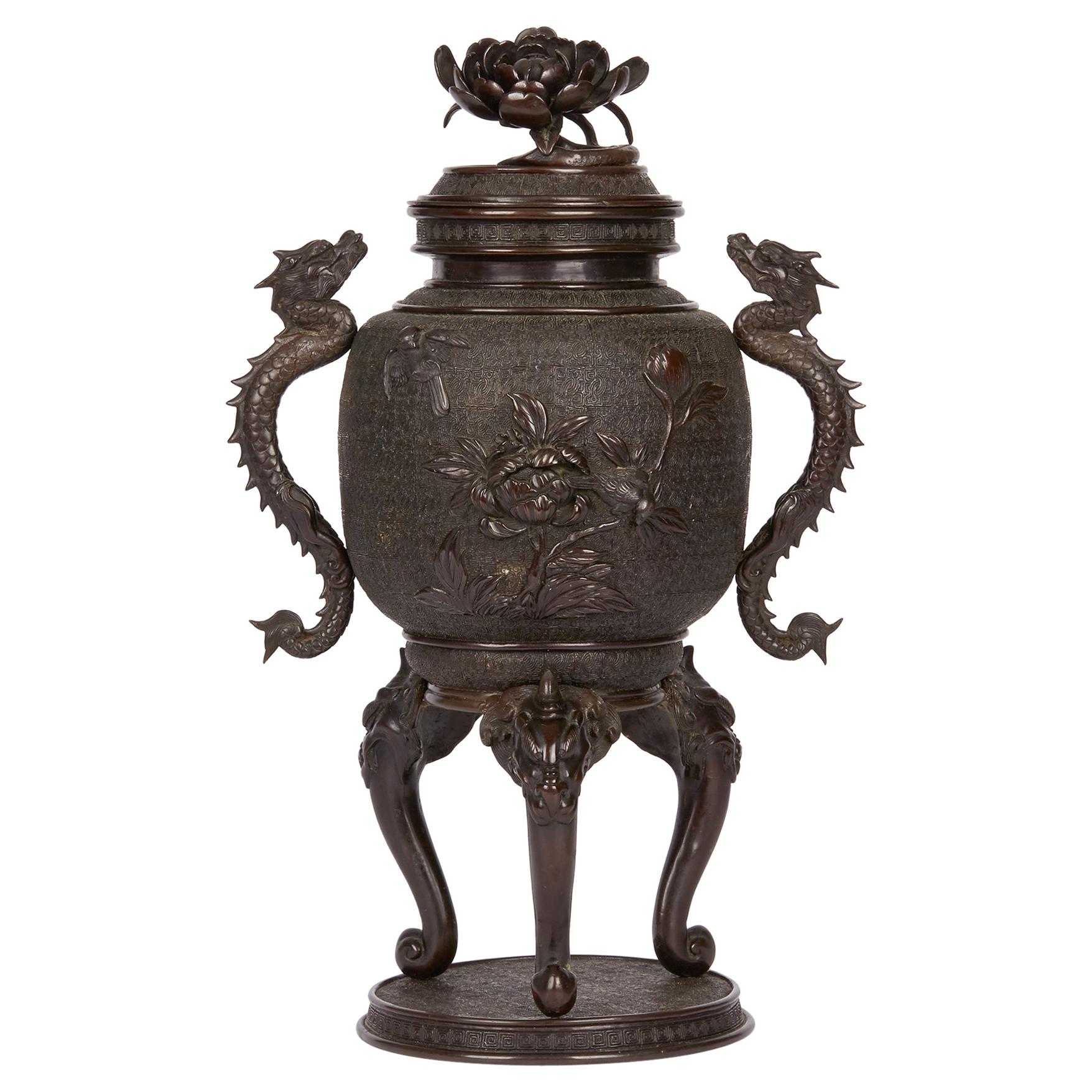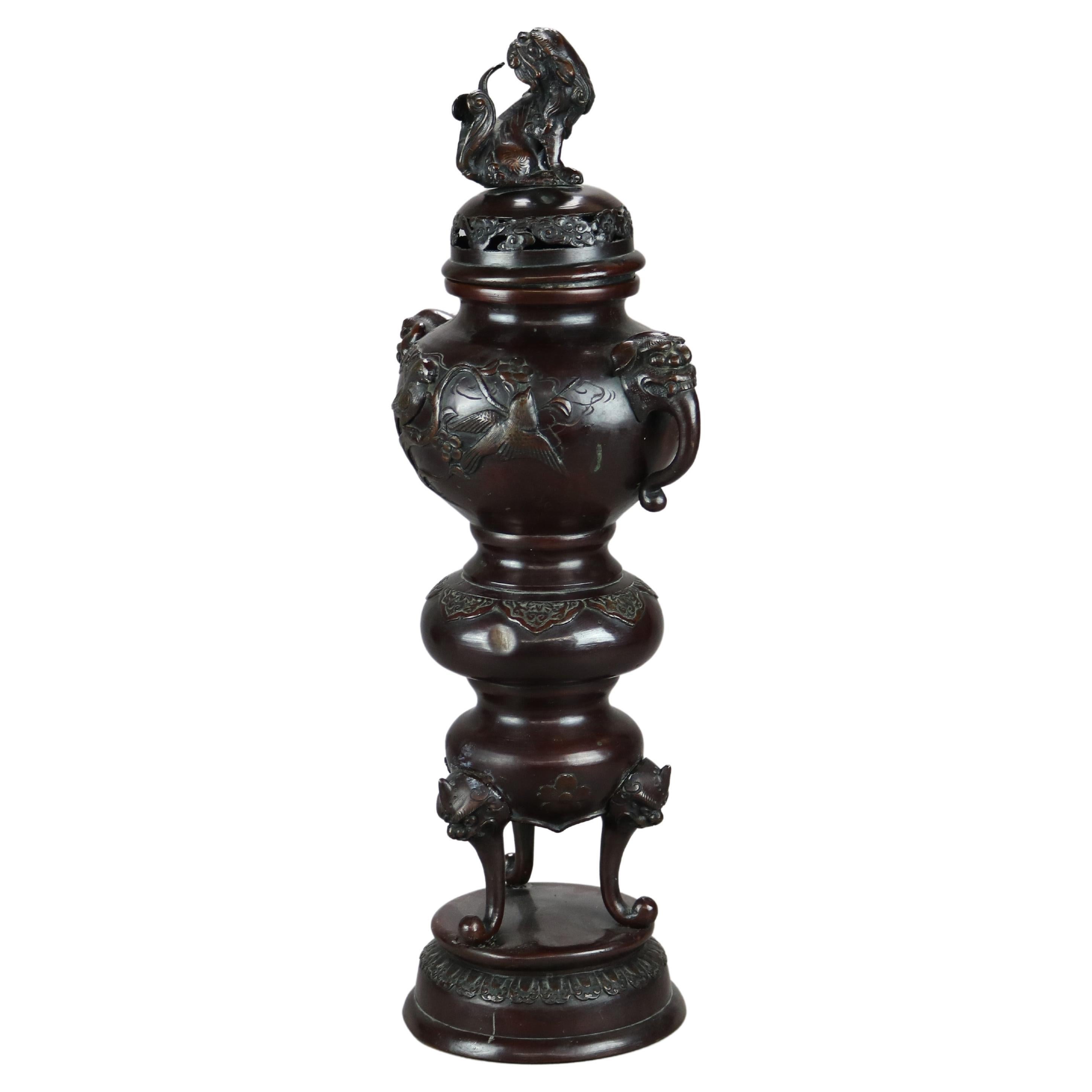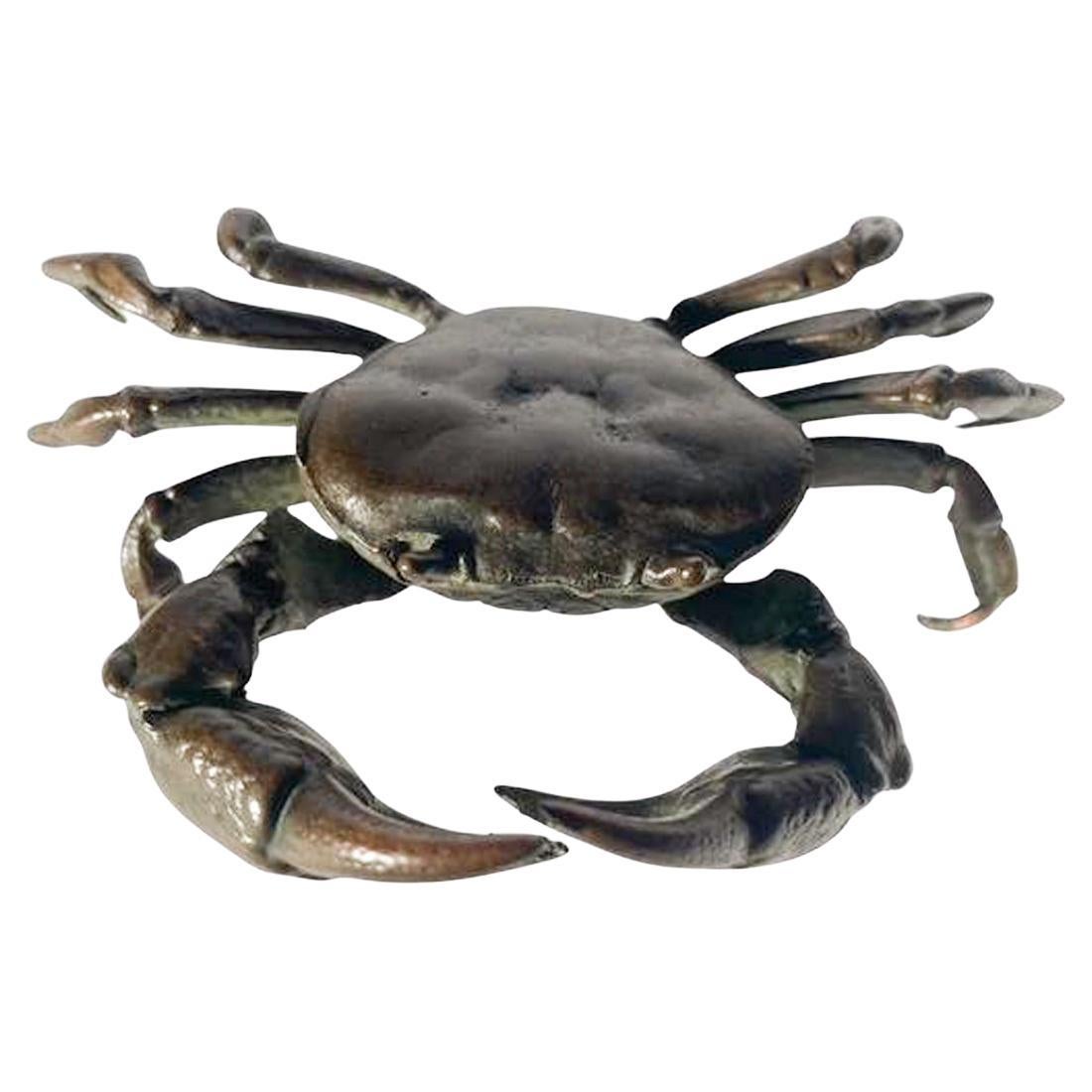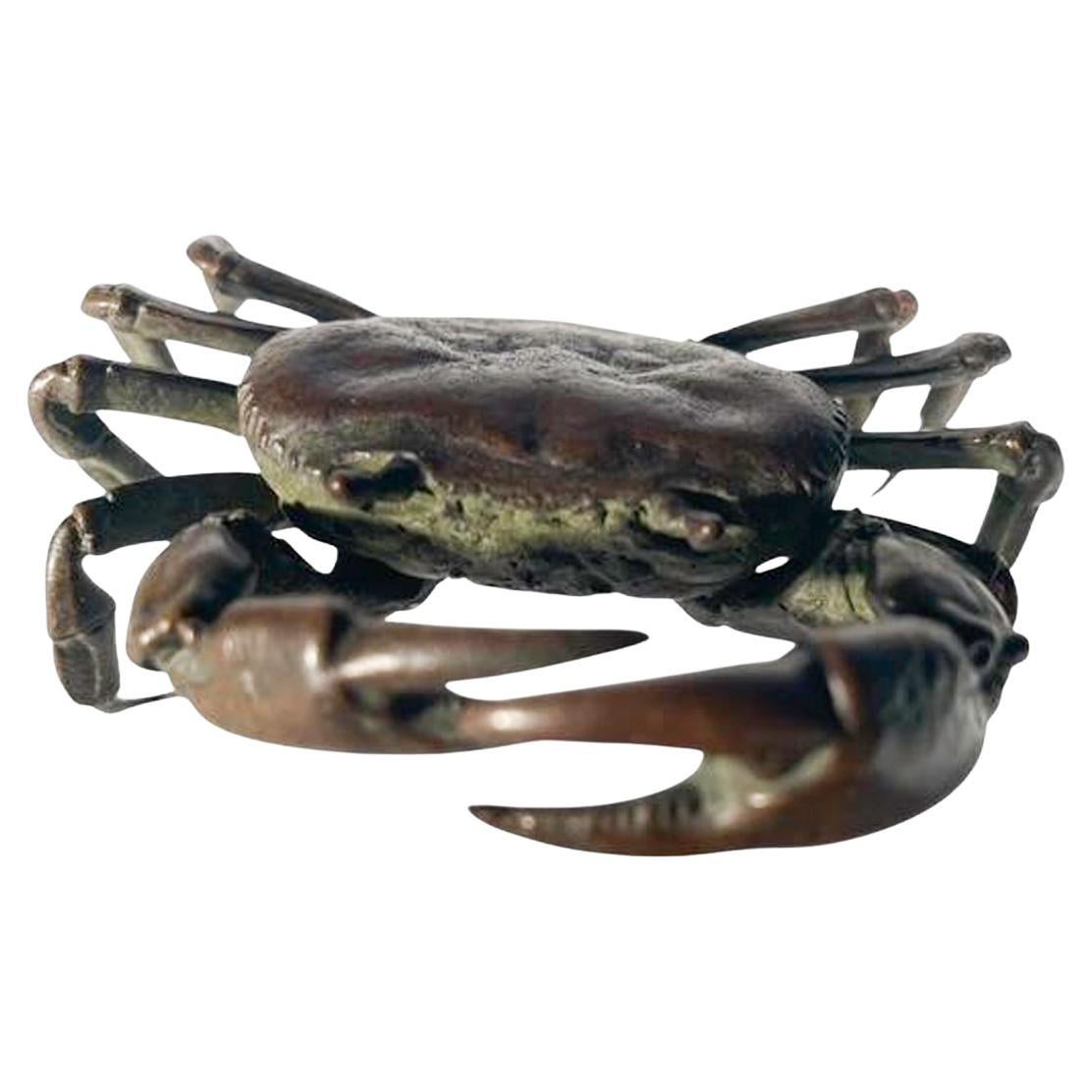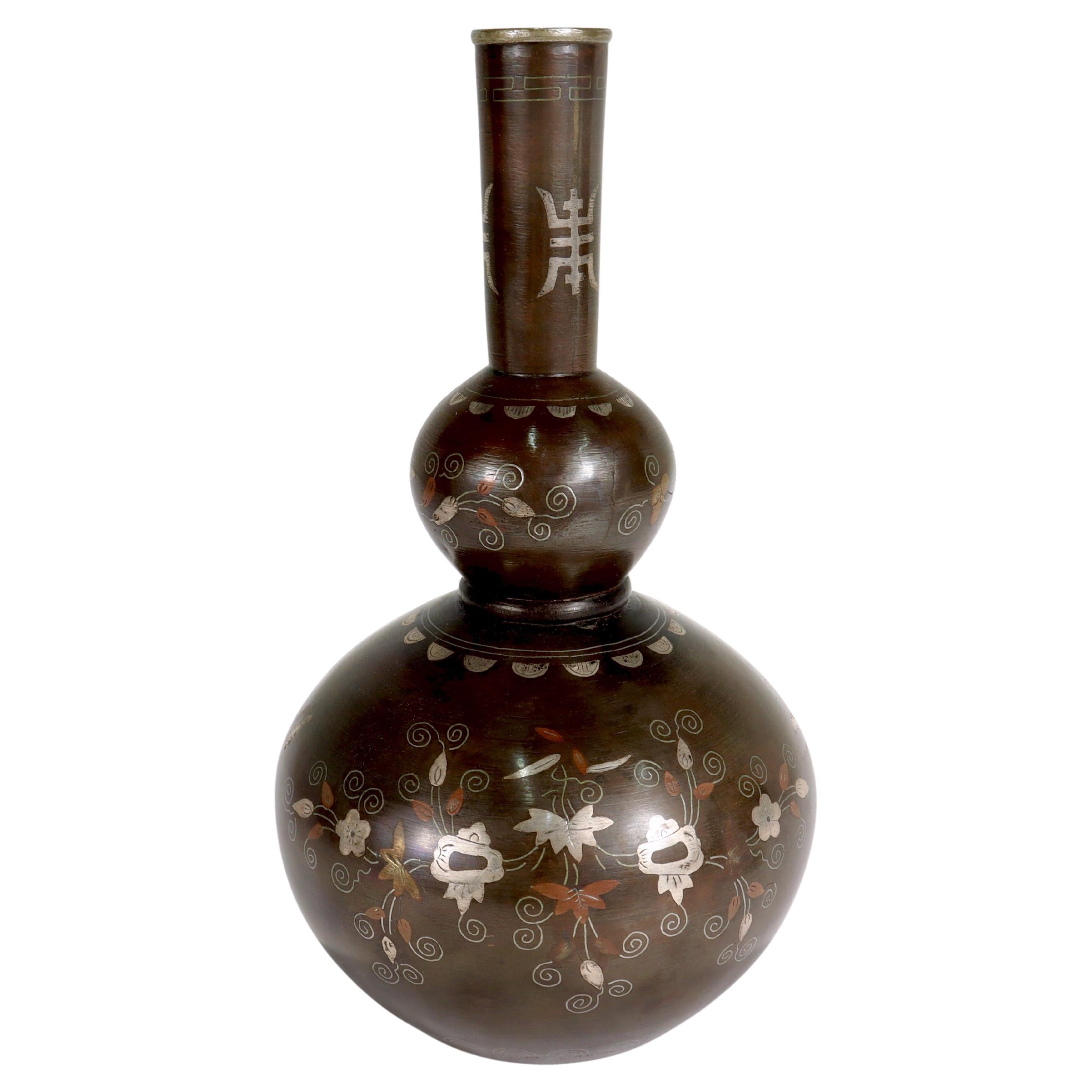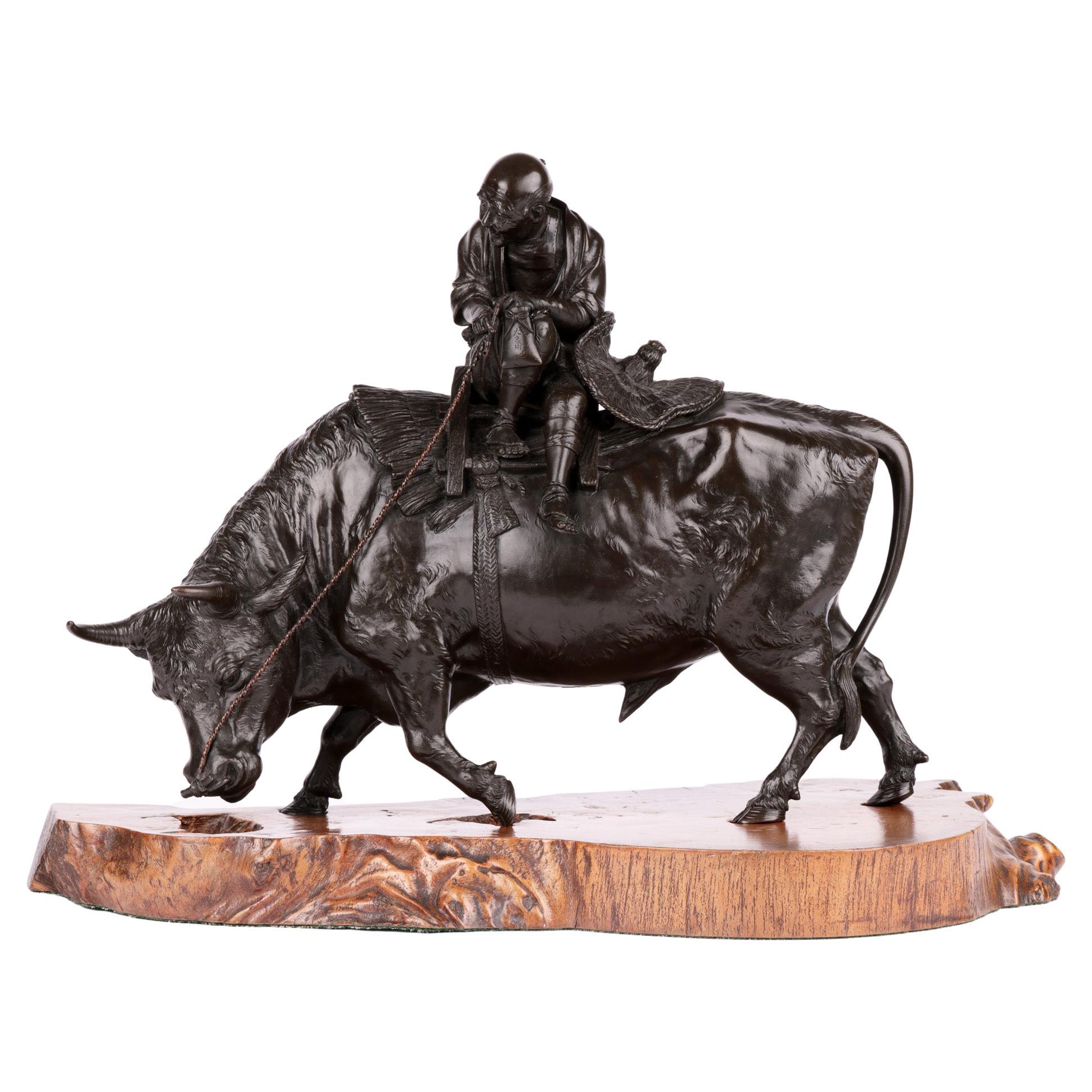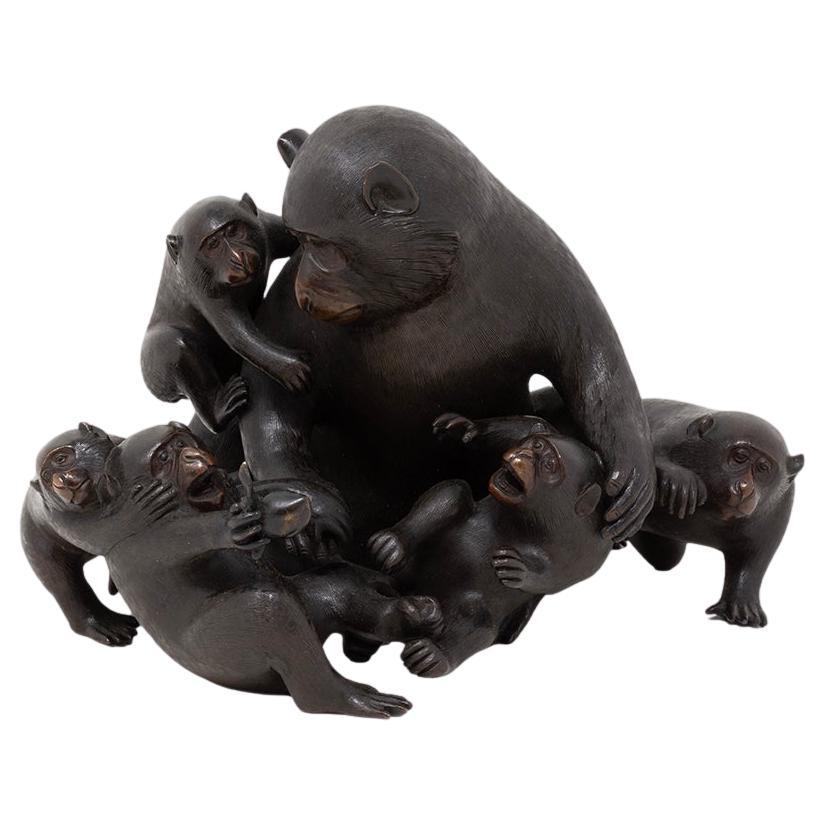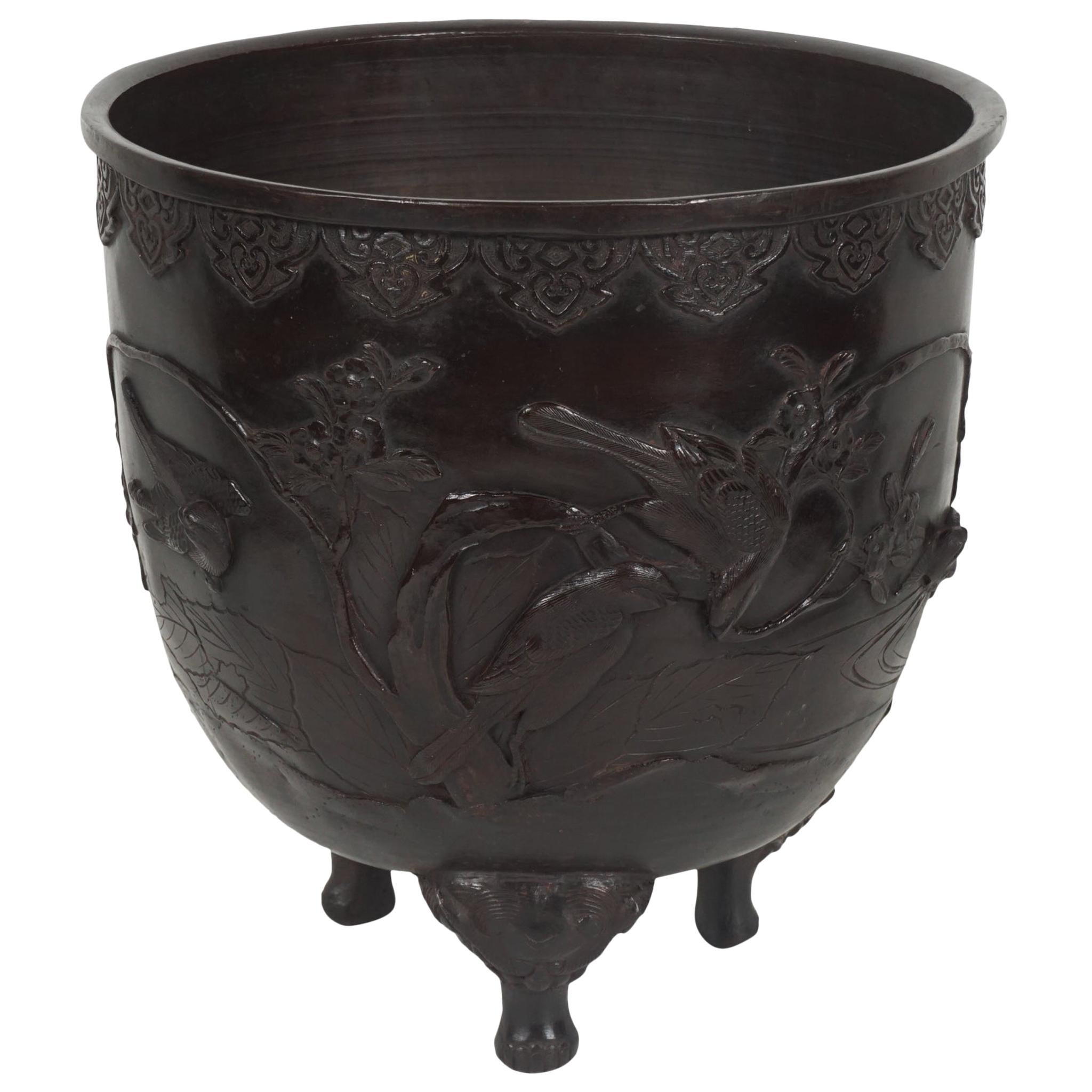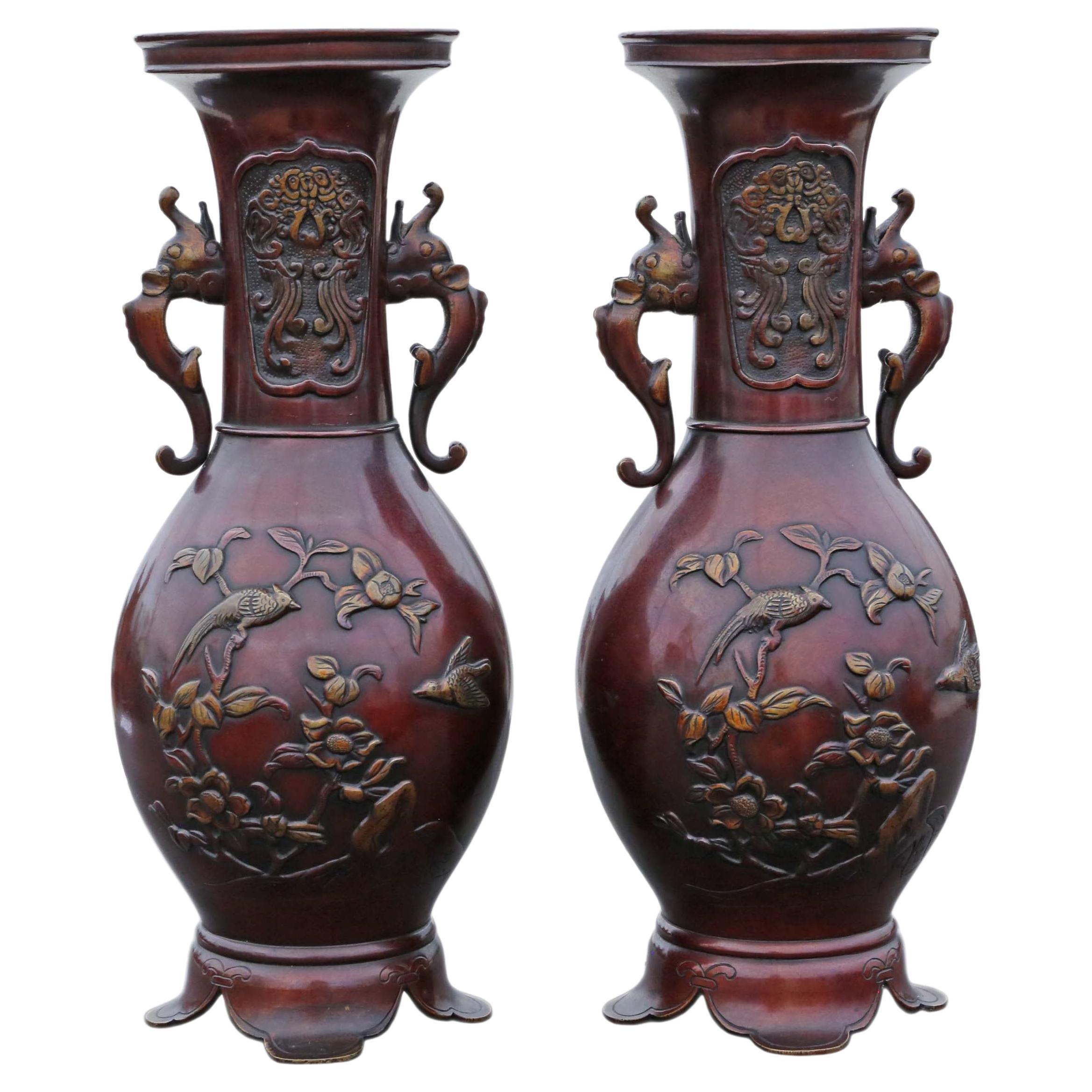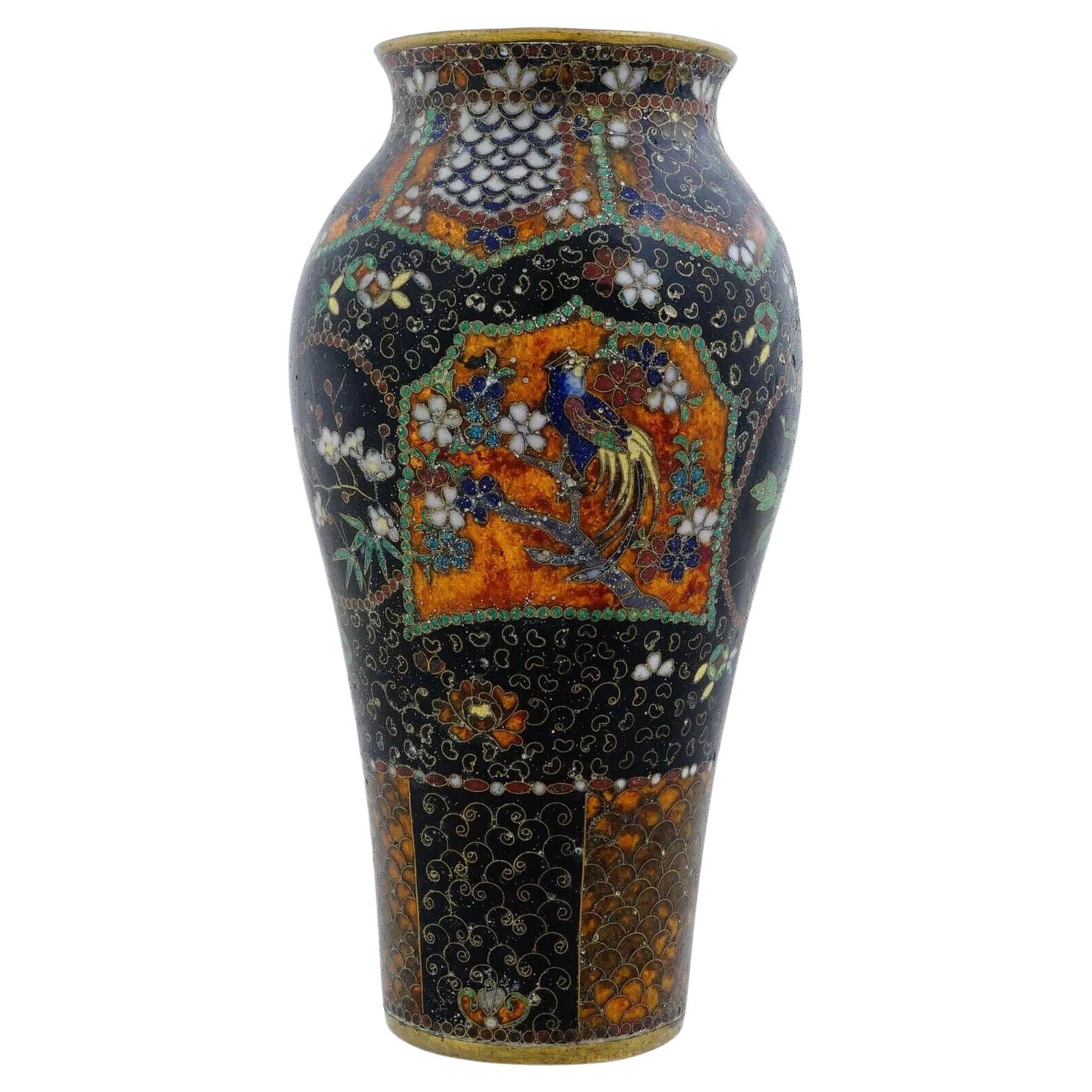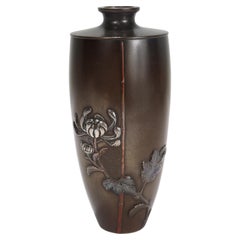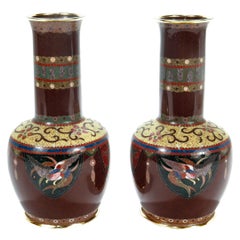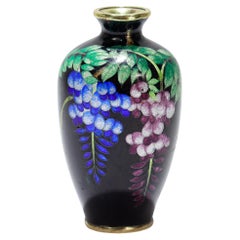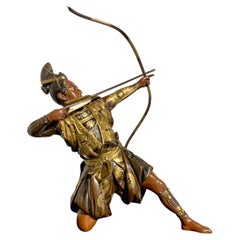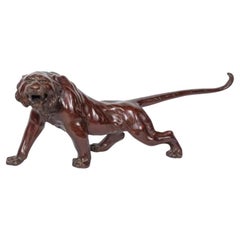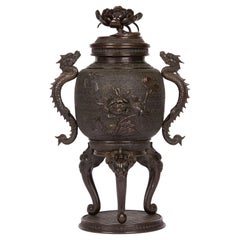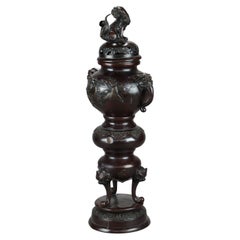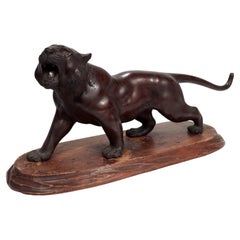
Antique Signed Meiji Period Japanese Bronze Tiger Sculpture
View Similar Items
Want more images or videos?
Request additional images or videos from the seller
1 of 21
Antique Signed Meiji Period Japanese Bronze Tiger Sculpture
Price:$1,850
About the Item
- Dimensions:Height: 7.5 in (19.05 cm)Width: 4 in (10.16 cm)Depth: 17.25 in (43.82 cm)
- Style:Meiji (Of the Period)
- Materials and Techniques:
- Place of Origin:
- Period:
- Date of Manufacture:Late 19th or Early 20th Century
- Condition:Wear consistent with age and use. See description for condition details.
- Seller Location:Philadelphia, PA
- Reference Number:Seller: D/I INV1stDibs: LU1610227429992
About the Seller
5.0
Gold Seller
Premium sellers maintaining a 4.3+ rating and 24-hour response times
Established in 1996
1stDibs seller since 2015
536 sales on 1stDibs
Typical response time: 1 hour
Authenticity Guarantee
In the unlikely event there’s an issue with an item’s authenticity, contact us within 1 year for a full refund. DetailsMoney-Back Guarantee
If your item is not as described, is damaged in transit, or does not arrive, contact us within 7 days for a full refund. Details24-Hour Cancellation
You have a 24-hour grace period in which to reconsider your purchase, with no questions asked.Vetted Professional Sellers
Our world-class sellers must adhere to strict standards for service and quality, maintaining the integrity of our listings.Price-Match Guarantee
If you find that a seller listed the same item for a lower price elsewhere, we’ll match it.Trusted Global Delivery
Our best-in-class carrier network provides specialized shipping options worldwide, including custom delivery.More From This Seller
View AllAntique Signed Japanese Meiji Period Mixed Metals Bronze Double Gourd Form Vase
Located in Philadelphia, PA
A fine antique Japanese bronze vase.
From the Meiji Period.
With copper and silver floral and vine and butterfly inlay as well a kanji symbol to the neck (possibly a stylized f...
Category
Early 20th Century Japanese Meiji Vases
Materials
Silver, Bronze, Copper
Antique Signed Japanese Bronze Mixed Metals Butterbur Vase by Atsuyoshi / Inoue
Located in Philadelphia, PA
A fine signed antique Japanese Meiji period mixed metals vase.
By Miyabe Atsuyoshi for Inoue of Kyoto.
With a bronze body and d...
Category
Early 20th Century Japanese Meiji Metalwork
Materials
Gold, Silver, Bronze, Copper
Pair of Signed Antique Japanese Cloisonne Enamel Vases by Daikichi
By Ando Shippo Ten, Kumeno Teitaro, Ando Jubei
Located in Philadelphia, PA
A fine pair of Japanese Meiji period cloisonne enamel vases.
By the Ohta Cloisonne workshop of Aichi Prefecture, Japan. T...
Category
20th Century Japanese Meiji Metalwork
Materials
Enamel
Antique Japanese Cloisonne Enamel Cabinet Vase with Wisteria
Located in Philadelphia, PA
A fine antique Japanese cloisonne enamel cabinet vase.
With polychrome enamel on a brass base.
Decorated with an enameled tree branches with blue & purple wisteria blossoms on a ...
Category
Antique 19th Century Japanese Meiji Metalwork
Materials
Enamel
Antique Japanese Kutani Pottery Bodhidharma or Daruma Figurine
Located in Philadelphia, PA
An fine, antique Japanese pottery Daruma figurine.
In the form of a Daruma, a depiction of Bodhidharma the semi-legendary founder of Zen/Chan Buddhism.
The figure's face and protruding toes are an unglazed dark brown and his robe has a dark red glaze.
Simply a charming Japanese figurine...
Category
Early 20th Century Japanese Meiji Sculptures and Carvings
Materials
Pottery
Antique Japanese Mixed Metals Copper & Silver Usubata Ikebana Flower Vase
Located in Philadelphia, PA
A fine antique Japanese flower vase.
In hand-hammered copper (or possibly a thin-bodied bronze) with applied silver bands to rim, footrim, shaped edge, and with a lotus petal border at the joint of neck and body.
Having the usubata form with a wide flared neck and mouth.
The 'usubata' vase is a form favored for large scale floral arrangements by the Ikenobo school, the oldest and largest school of Japanese ikebana founded in the 15th century by Buddhist monk Senno Ikenobo. It is believed that the wide and shallow rim of an usubata vase which displays the surface of the water best imitates natural conditions of growth while also contributing to the longevity of an arrangement with the increased surface area of the water better oxygenating the plants.
The base retains still retains hand-hammered marks.
There is evidence of seams and folds throughout from the construction, and the surface has a cloud-like brown patina throughout.
Simply a wonderful Japanese mixed metal vase...
Category
Antique Late 19th Century Japanese Meiji Vases
Materials
Silver, Copper
You May Also Like
Japanese Miyao Style Gilt Bronze Samurai Archer, Meiji Period, Japan
By Eisuke Miyao 1
Located in Austin, TX
A spectacular Japanese cast, carved, and parcel gilt bronze sculpture, okimono, of a kneeling samurai archer, signed Kiyotsugu (died 1894), Meiji ...
Category
Antique Late 19th Century Japanese Meiji Sculptures and Carvings
Materials
Bronze
A Massive Japanese Patinated Bronze Sculpture of a Tiger, Meiji Period
Located in Long Island City, NY
A Massive Japanese Patinated Bronze Sculpture of a Tiger, Meiji Period. Signed.
Measuring an impressive 44 inches in length, this extraordinary sculpture is a striking example of t...
Category
Antique 19th Century Japanese Meiji Sculptures and Carvings
Materials
Bronze
Large Japanese Meiji Bronze Lidded Urn, 19th Century
Located in Bishop's Stortford, Hertfordshire
A large and stylish antique Japanese Meiji bronze lidded twin handle urn standing on a rounded plinth base with tongue and grotesque head formed legs with dragon handles and a flat c...
Category
Early 20th Century Japanese Meiji Metalwork
Materials
Bronze
Antique Japanese Bronze Meiji Footed Censer with Figural Foo Dogs & Birds, 1900
Located in Big Flats, NY
An antique Japanese Meiji censer offers cast bronze construction with foo dog lid over bulbous vessel having band with birds and flanking handles with foo ...
Category
Early 20th Century Japanese Metalwork
Materials
Bronze
$960 Sale Price
20% Off
Signed Japanese Meiji Period Bronze Crab (E) Okimono
Located in Chapel Hill, NC
Signed Japanese okimono of a realistically modeled crab raised up on its toes and with claws raised. One of 5 designated by (E) in the title.
Category
Antique Late 19th Century Japanese Meiji Sculptures and Carvings
Materials
Bronze
Signed Japanese Meiji Period Bronze Crab (D) Okimono
Located in Chapel Hill, NC
Signed Japanese bronze okimono of a naturalistically modeled crab on its toes and with claws raised. One of five designated by (D) in the title.
Category
Antique Late 19th Century Japanese Meiji Sculptures and Carvings
Materials
Bronze
Recently Viewed
View AllMore Ways To Browse
Meiji Tiger
Tiger Statue
Tigers Eye Sculptures
Japanese Bronze Tiger
Meiji Bronze Tiger
Antique Stone China
Burma Buddha
Stone Sculpture Chinese
Chinese Temple
Kyoto Furniture
Asian Head Sculptures
Bronze Sculpture From Asia
Chinese Carved Jade
Buddha And Bronze
Antique Chinese Sculpture
Buddha Mudra
Asian Horse Art
Japan Hand Painted China
